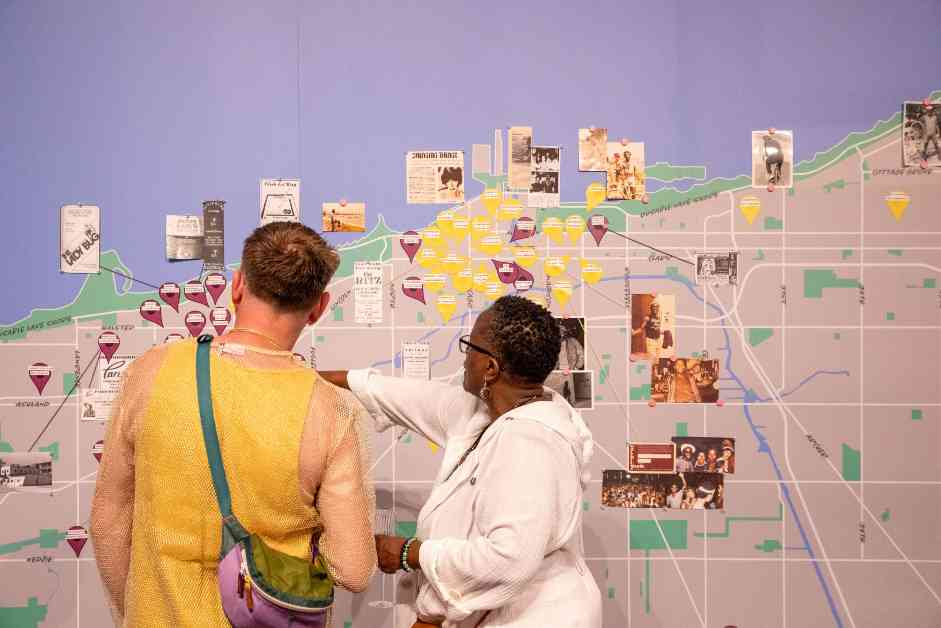Walking through the “Just Below the Surface” exhibition at the Chicago Art Department, visitors are given a glimpse into the hidden histories of queer Black and Brown communities in Chicago. The photographs curated by Cristobal Alday and Carlos Flores showcase the work of Diana Solis and Patric McCoy, two photographers who captured the essence of love, community, activism, and joy during a time when queer individuals were marginalized from mainstream society. Solis’s vibrant photos depict the activist communities and lesbian social circles on the north and lower west sides, while McCoy’s portraits focus on gathering spots for Black gay men downtown and on the south side.
What makes this exhibition truly unique is the interactive map of Chicago that connects the photographs taken by McCoy and Solis. Despite not knowing each other, their work comes together to create a visual representation of the network of gathering sites for queer Black and Brown Chicagoans during the 1970s to the early ’90s. The map serves as a unifying force, breaking down barriers of geography, race, and gender to highlight the shared experiences of these communities.
In addition to the photographs, audio recordings of casual conversations, as well as ephemera like cameras, negatives, flyers, and magazines, provide a deeper understanding of the photographers and the spaces they inhabited. The exhibition also features scenes from Marilyn’s bar and the Rialto, two important gathering spaces for McCoy and Solis, bringing to life the vibrant queer culture of that era.
As visitors walk through the exhibition, they are invited to step into the past and witness the stories of queer individuals who dared to live authentically and openly. “Just Below the Surface” celebrates the resilience and strength of these communities, while also acknowledging the struggles they faced. By honoring the past, this exhibition paves the way for a more inclusive and accepting future for queer people of color.
In a time where the voices of marginalized communities are often silenced, “Just Below the Surface” serves as a powerful reminder of the importance of documenting and preserving queer histories. Through the work of Diana Solis and Patric McCoy, we are able to see the beauty, resilience, and joy that existed within these communities, despite the challenges they faced. This exhibition is not just a collection of photographs; it is a tribute to the individuals who paved the way for a more inclusive and diverse society.


